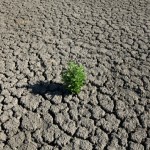2013 Brings Bad Spring for Some Texas Farmers

Rick Auckerman / Texas A&M AgriLife Extension Service
Irrigation in freezing weather can damage crops and equipment, but many crops must be irrigated because of statewide drought conditions.
Recent rains helped pull more of the state out of drought- but 92 percent of Texas is still experiencing at least a moderate drought and in some of the state drought has worsened.
The U.S. Drought Monitor maps released Thursday morning show a slight decrease from last week in the percent of the state facing drought, but a four percent increase in the state currently under “extreme” drought.
The Northeast and far eastern portions of Texas received some relief with recent rains. The NOAA Climate Prediction Center estimates these regions, along with much of the Midwest, will see improvements in the coming months.
Victor Murphy, climate program manager at National Weather Service Southern Region, predicted the pattern when he spoke with StateImpact Texas two weeks ago.
“East Texas will probably fare okay, but South and West Texas will probably see a lot of stress on surface water,” Murphy says. “Barring landfall of a hurricane or tropical storm, it’s probably going to get worse before it gets better.”
The Texas Water Development Board backed up that assessment in their weekly drought update to state lawmakers. The update shows the Southern and Lower Valley regions remaining severely and excessively dry. The Lower Valley region is also classified as having an “exceptional fire risk.”
If drought was working against farmers this week, it wasn’t alone. A late season freeze on Monday night may have damaged crops already weak from prolonged dryness.
Rick Auckerman, a Texas A&M AgriLife Extension agent in the panhandle reported damaged wheat fields before the freeze even hit.
“Two fields that I had inspected were 75 to 80 percent damaged with collapsed stems and heads dying,” Auckerman said in an AgriLife release. “These fields were thin plant stands and not irrigated well when this freeze moved in. Now with this last freeze, all bets are off, so to speak, and again we will have to wait to assess this past round of damage.”

